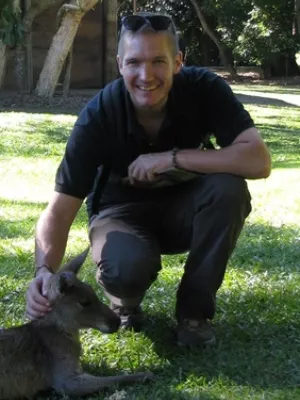
Paul Caplat
Forskare

Effects of disturbance frequency, species traits and resprouting on directional succession in an individual-based model of forest dynamics
Författare
Summary, in English
Succession theory focuses on the position of species along the shade tolerance gradient and their ability to colonize recently disturbed patches and has for decades overlooked resprouting as a key trait in community patterns. We study how different species traits interact with disturbance frequency to change species dominance in the canopy, focusing on the effects of resprouting ability. We develop an individual-based model that simulates the dynamics of three species paper birch Betula papyrifera Marsh, white pine Pinus strobus L. and sugar maple Acer saccharum Marsh., characterized by different successional strategies, as observed in northern Minnesota forests. We tested (i) how different disturbance frequencies, (ii) sugar maple resprouting and (iii) paper birch resprouting change successional patterns. We show that three disturbance frequency classes produce three different outcomes, each dominated by a different species, with lower disturbance frequency favouring later successional species. The importance of resprouting ability for success in the canopy depends on the species' other life-history traits. Sugar maple is able to dominate the community at all disturbance frequency classes with resprouting, whereas the inclusion of resprouting for paper birch does not change the successional patterns. White pine is indirectly favoured by sugar maple's resprouting ability, excluding paper birch from the community at disturbance frequency classes that would see paper birch dominance in the absence of resprouting. Synthesis. We model tree life histories in a disturbed environment and test how the inclusion of resprouting changes succession patterns. Our results confirm the recent interest of taking into account resprouting, as it can bend succession directionality, and thus change community composition in response to disturbance. This has wide consequences for predicting forest diversity patterns as well as invasion phenomena in a changing world.
Publiceringsår
2009-09
Språk
Engelska
Sidor
1028-1036
Publikation/Tidskrift/Serie
Journal of Ecology
Volym
97
Issue
5
Länkar
Dokumenttyp
Artikel i tidskrift
Förlag
Wiley-Blackwell
Ämne
- Ecology
Nyckelord
- Disturbance regime
- Fire
- Great Lakes forest
- Paper birch
- Patch dynamics
- Sugar maple
- Vegetative reproduction
- White pine
Status
Published
ISBN/ISSN/Övrigt
- ISSN: 0022-0477